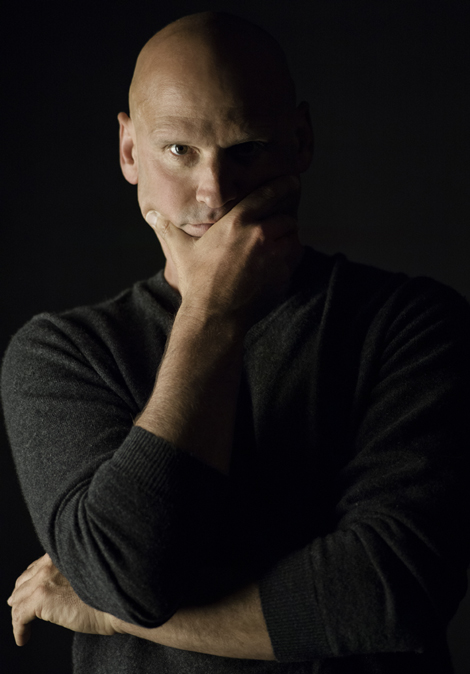Since the 2012 opening of his eponymous Hollywood gallery, Perry Rubenstein has exerted considerable influence on the contemporary art world, while imbuing several exhibitions, such as his recent “The Humors,” with intellectual and symbolic perspectives that reference the human condition. At his sleek modernist structure on North Highland Avenue, this fit and debonair 59-year-old enthusiastically discusses his role in the visual arts. Rubenstein says that his move out West is, “a professional seismic shift, as Los Angeles today is the main event in the international contemporary art world; this area nurtures some of the most significant artists working today, the art schools are spectacular, and the museums are directed by the most visionary individuals… bar none.” Why Hollywood and why not Culver City? “When the world thinks about Los Angeles, they think about this area.” He adds that LA is historically connected to the Hollywood myth, while the area’s cultural influences radiate worldwide. “We looked at other SoCal locations, but decided that we could best contribute to the art world by positioning our gallery here. And Hollywood is the sexiest place in LA.”
I first met Rubenstein during the Mike Kelley exhibition, “Deodorized Central Mass with Satellites,” the premiere LA showing of this satirical, conceptual 1991 piece. “It is like John McCracken meets Darth Vader” (the deodorizers are shaped like Vader), he says about the installation of stuffed animals, surrounded by lacquered “deodorizers.” Rubenstein paid homage to the late Kelley’s legacy, while presenting this work as a gift to his newly adopted city.
Rubenstein grew up in Philadelphia and was inspired early in life by galleries there that featured conceptual and minimal work. In 1979, at age 25, with a passion for contemporary art and no specific plans, Rubenstein flew to Milan, Italy. While staying at a small pensione, the concierge recommended that he model for the then upstart Milan-based clothing designer, Gianni Versace. With no previous experience, the future art dealer showed up at the designer’s workshop. “Versace threw several sweaters at me, photographed me, and then said, ‘You’re the best model in this city,” Rubenstein tells me. “Of course, I was the only 6-foot tall male model, as it was off-season. At the end of the day, he gave me $1,000 in cash. Soon I was working with Versace, Armani, Valentino and other major designers, modeling for French and Italian Vogue, traveling all over Europe and Africa.”
Rubenstein’s income and easy access to European art museums and galleries facilitated his immersion in contemporary art, as well as his purchase of works by Basquiat, Warhol, Schnabel, Twombly, Kiefer and others. He left modeling in 1981, moved to New York to, “establish and galvanize a position in the art word,” he explains. “The contemporary art world was in its relative infancy while barriers of entry to this world were significantly less structured than today.” Once in New York, word got around about his small but significant collection, and soon high-profile collectors were purchasing his works.
As a private dealer in Manhattan’s Chelsea area for two decades and a gallerist there from 2004, Rubenstein often returned to Europe to acquire artworks. Over time, his keen eye, passion for 20th-century art history and outgoing personality enabled him to become one of New York’s top art dealers. “I have been fortunate to have engaged influential collectors, curators and other art-world professionals who have inspired, influenced and in some cases mentored me,” he says.
In 2011, Rubenstein sold his Chelsea home and exhibition space, moved to Los Angeles, and spent a year designing and building his gallery. Since then, Perry Rubenstein Gallery, L.A. has mounted seven major exhibitions, including the recent summer show, “The Humors,” presenting work by Georg Herold, Patrick Jackson, Jim Lambie, Paul McCarthy and Martin Kippenberger. In addition to the importance of gallery showings, Rubenstein explains, “Museum exhibitions and acquisitions are crucial to create a critical dialogue around the artists and their work—and to open up opportunities for them. For instance, Zoe Crosher’s exhibition at our gallery created a precedent for her work to be included in MoMA’s ‘New Photography 2012.’ Her work was subsequently acquired by MoMA.” He is currently working on an exhibition with South African, Berlin-based Candice Breitz, a multimedia artist whose work, “is inexorably linked to Hollywood.”
Looking back to 2012, Rubenstein talks ruefully about Hurricane Sandy striking the East Coast and flooding his former Chelsea gallery space and home. “I had already left New York, but I felt like I had escaped the Blitz,” he says, referring to the 1940 London bombing. With a wink, the charming dealer adds that his journey through life has indeed been fortuitous. He draws on this experience and formidable network of relationships, taking as his mission the fostering of emerging and mid-career artists by exhibiting their works and facilitating their acquisitions by major private and public collections. He gives back to an art world that has nurtured and benefitted him and his collections for more than three decades.



















0 Comments